Exclusive: Monaco Created a Ritzy, Multibillion-Dollar Neighborhood From Scratch—Here’s a Look Inside
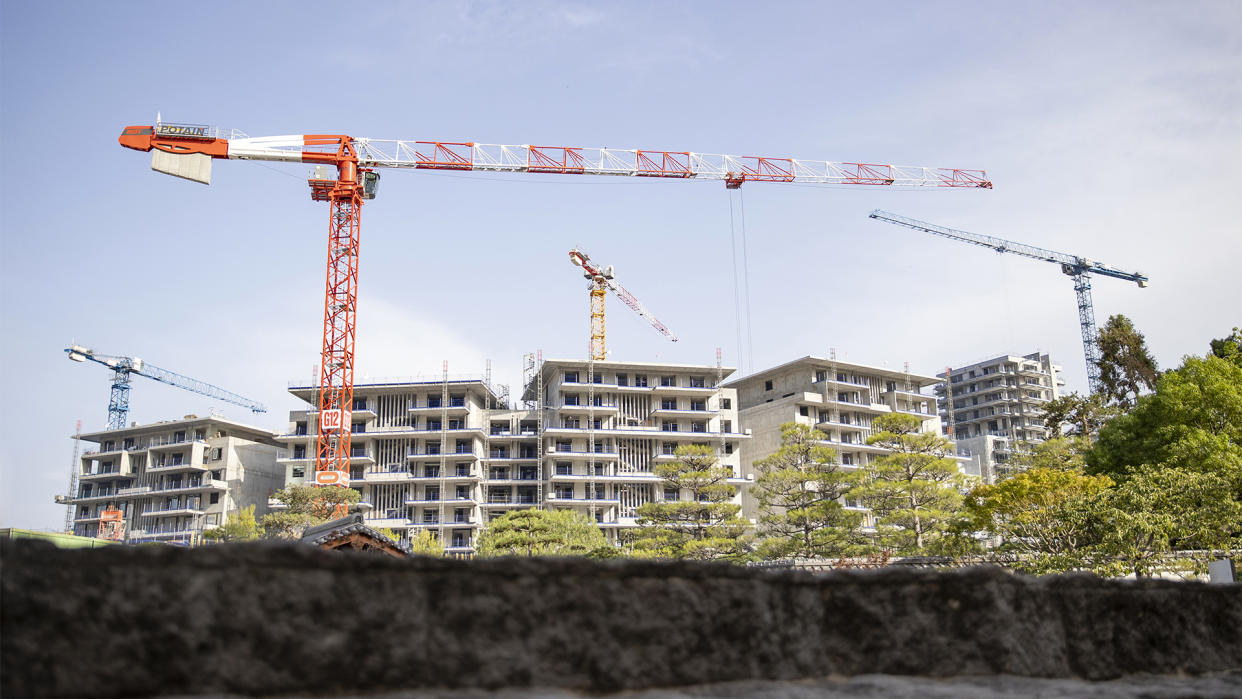
Portier is a turn in the road familiar to Formula 1 fans, a double right-hander that tees up one of the trickier stretches of Monaco’s Grand Prix circuit, where drivers tear through a tunnel whose aerodynamics can snap a third of a car’s downforce. Portier is where Ayrton Senna famously wrecked late in the race in 1988, after leading for 67 laps, handing victory to rival Alain Prost. But soon, this tiny corner of a tiny country (at 499 acres, it’s bested only by Vatican City for the title of Europe’s smallest state) will be famous for entirely different reasons. The forest of cranes that have sat on the waterfront in its backyard for more than a decade will vanish next year, heralding the end of a multi-billion-dollar project as well as the opening of an entirely new neighborhood, located on a plot of man-made land bolted to this strip of coastline. Called Mareterra, it will be home to what its developers hope will be the most expensive real estate anywhere in the world.
Reclaiming land from the sea here is not a new idea. Monaco has nibbled greedily at the surrounding waters for decades—since the 1950s, 20 percent of the principality’s surface area has been created this way. Yet Mareterra is one of the most ambitious efforts to date, a 14-acre district that will increase the country’s size by 3 percent. The project has been surrounded by secrecy and rumor, but Robb Report was granted exclusive first access to preview the site, which boasts a name-dropper’s dream of assorted starchitects. Renzo Piano helmed the ultra-luxury 50-unit building that’s named in his honor, while Stefano Boeri, Tadao Ando, and Sir Norman Foster are among the names who have designed properties in the 10-strong villa collection—in Ando’s case, a complementary adjacent pair nestled in the southwestern corner. Paris-based Valode & Pistre, whose projects have included the Musée d’Art Contemporain in Bordeaux and the Clarins headquarters in Neuilly-sur-Seine, France, oversaw the master planning as well as the design of the family-focused Les Jardins d’Eau apartment complex, while the green spaces fell to landscape architect Michel Desvigne, who has juggled teaching at Harvard with creating outdoor environments for the likes of Rem Koolhaas, Jean Nouvel, and Herzog and de Meuron. For Mareterra, Desvigne emphasized local pines rather than the palm trees once imported en masse as evocative exotica. There’s also ample public space, including a half-mile-long promenade at the water’s edge, plus an extension of the Grimaldi Forum exhibition building and a mixed-use marina with 16 slips for residents and visitors.
More from Robb Report
This Colorful New York City Condo Overlooking the Hudson River Comes With a Private Sky Garage
This Media Mogul's Sprawling Hollywood Hills Estate Just Hit the Market for $60 Million
A Media Power Couple Lists Their Newly Built Hamptons Home for $25 Million
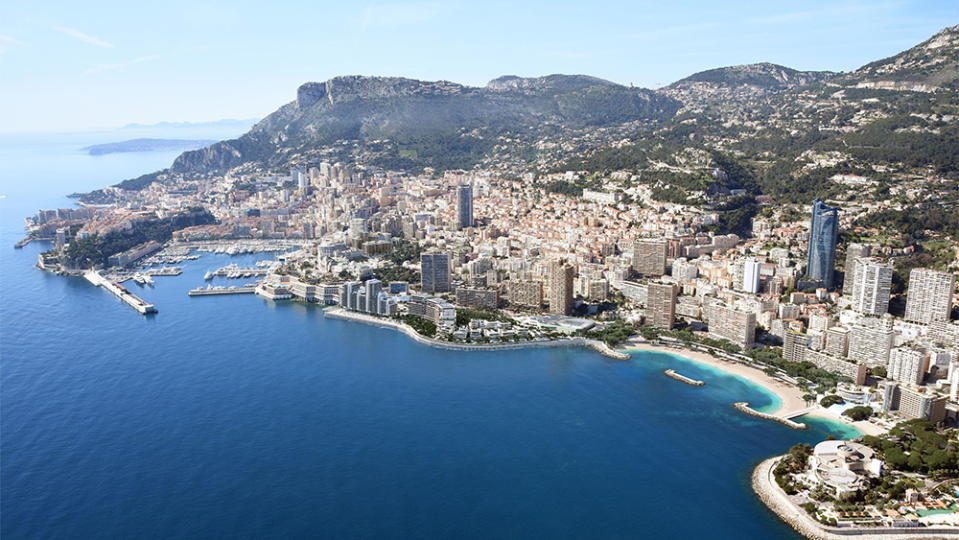
The best guide to the site is Guy Thomas Levy-Soussan. The 50-something Monegasque banker joined developer Patrice Pastor on the project six years ago after living and working around the world, including an extended stint on Wall Street. He’s a genial, energetic presence striding between the near-finished structures of the construction site, undeterred by the heat of a June day and a clammy plastic safety vest. He’s surprisingly informal, too—a small blue friendship bracelet peeks out past his crisp white cuff, and his quiff quavers in the breeze. At the outset of the tour, Levy-Soussan emphasizes the aspects that differentiate this district from the ever-present redevelopment elsewhere in Monaco. Those other buildings are often awkwardly wedged onto the steep hillside like the world’s most expensive Legos, the design pretzeled into whatever footprint is available. By contrast, at Mareterra, the developers started with a blank slate, giving themselves—and the clutch of design talent—leeway to indulge every whim.
“When you buy an apartment in Monaco, there’s always a compromise,” he says. “This was our statement: to be unique and offer what did not exist.”
The project was named L’Anse du Portier, or Portier Cove, but the new district will officially be known as Mareterra on maps. It was Prince Albert II who picked the name from a short list. “It was my favorite, too,” says Levy-Soussan, “because when the architects talked about the project, they talked about the sea and the ground together here.” The royal family has been integral to the development beyond simply naming it: Expanding the country with a reclamation effort became a pet project for the prince soon after he acceded to the throne. (As this issue went to press, several close advisers to the prince stood accused of accepting payments for real-estate projects, but neither Albert nor the developers of Mareterra had been implicated in any wrongdoing.) Albert’s mother, Princess Grace, was Levy-Soussan’s godmother, and Levy-Soussan grew up alongside her children, so tapping him effectively installed the prince’s proxy as day-to-day head. In the construction-site locker room, one of the few allocated units bears the name of Andrea Casiraghi, son of Princess Caroline, Albert’s elder sister.
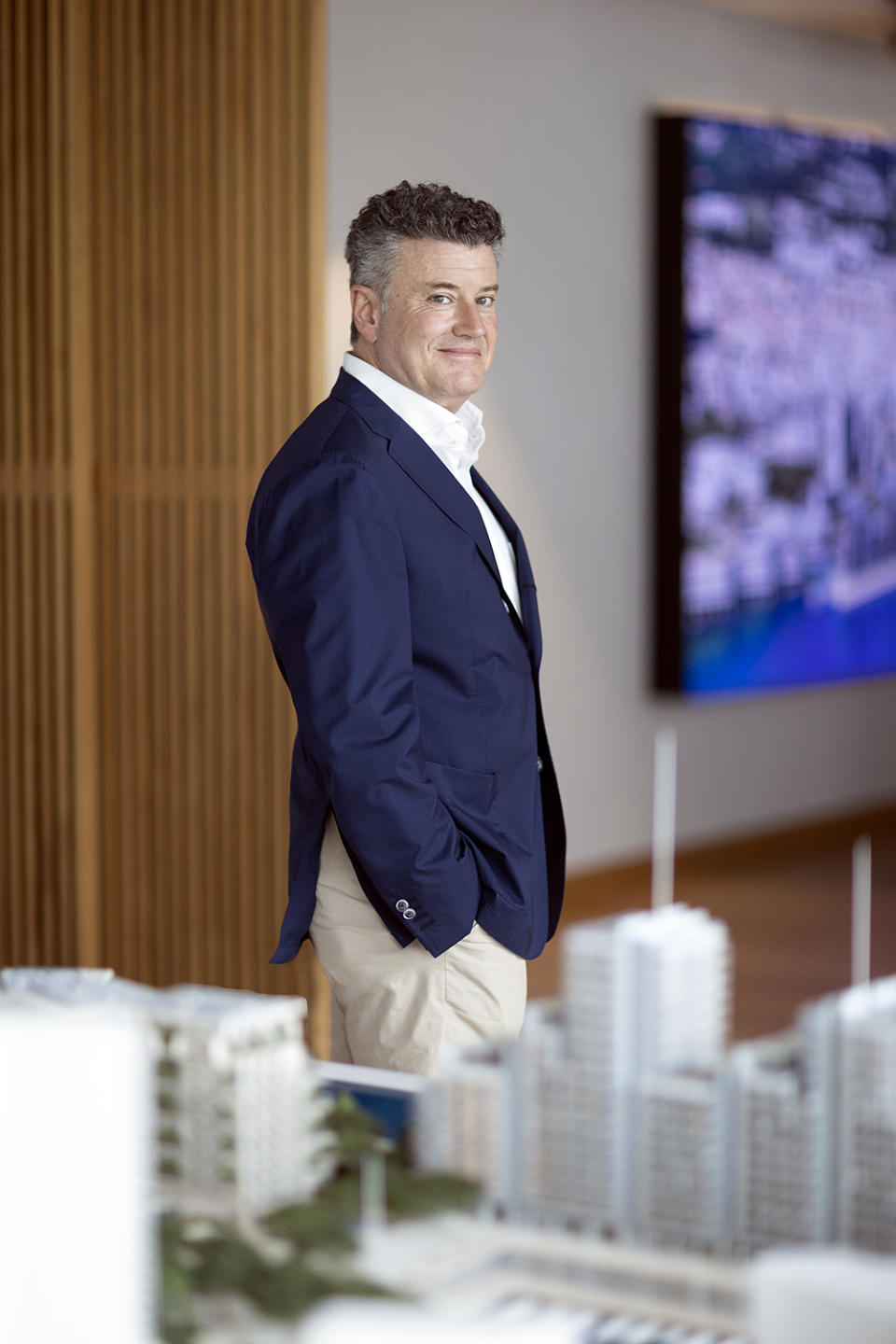
Le Renzo has a regal affect apropos of the project’s patron. Its floor-through apartments with dual views of ocean and city are massive—the smallest is just over 4,000 square feet—with only two per floor, though some buyers have bought adjacent units to combine into larger homes. Le Renzo includes the on-site extras of any desirable building in Miami or New York, such as a gym and a wine room; the accessory apartments on lower floors are available only as an additional purchase to use, say, as a nanny annex or a stand-alone home office.
Piano’s namesake also adjoins the neighborhood’s most exclusive perk: a 65 foot–by–54 foot saltwater swimming pool (named in honor of Prince Albert’s wife, onetime champion swimmer Princess Charlene) that will be accessible only to those living in Le Renzo, while the rest of Mareterran apartment dwellers will have to simply look on longingly. The pool’s prominence—jutting out into the water, free from incursions around it—isn’t merely a status statement, according to the project’s landscape designer, Michel Desvigne. “It protects the harbor from a big wave, much better than a big wall would have done,” he tells Robb Report, noting the adjacent marina. It’s the realization of an idea he first trialed with Piano four decades ago. “It was a study in the north of the Adriatic, close to Trieste, that we didn’t complete: Instead of a very high wall, could we try a bigger, flat surface?”
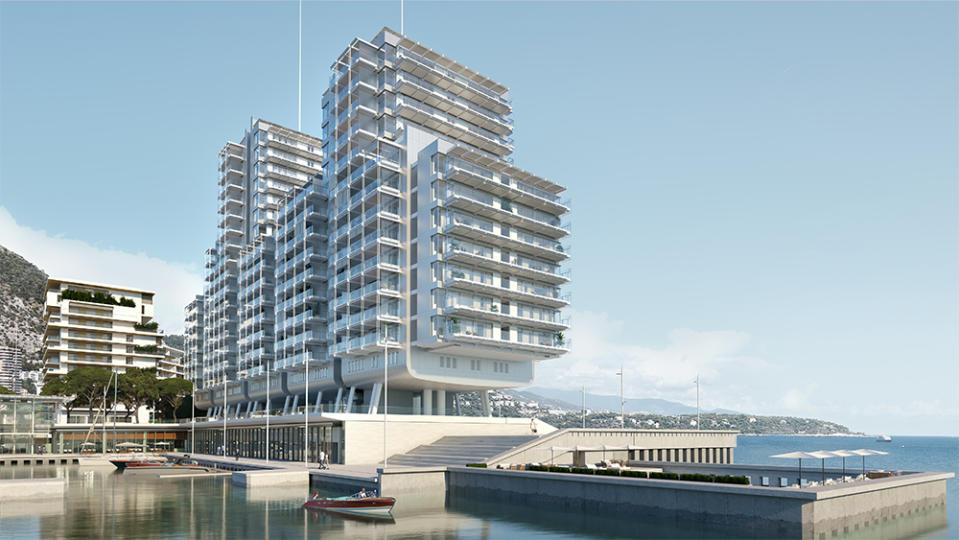
Those living in the villas, of course, will have their own pools. Monaco was once cluttered with Belle Epoque–era waterfront homes, with almost 600 still standing in the early 1950s. Since then, aggressive real-estate development in the tax haven has seen all but a handful demolished to make way for high-rises, so Mareterra’s commitment to seven waterfront homes (with three more on the artificial hill behind) is architectural catnip. No wonder, then, that it has attracted such a roster of world-famous names to design them, all corralled by the buyers. “The deal was very simple: If you buy at the beginning, you can bring in your own architect,” Levy-Soussan explains, walking past the two Ando-helmed homes, the last to begin construction. Did anyone buy more than one of the villa sites, which are around half an acre apiece? “Not originally, no,” he says, smiling to suggest that perhaps an initial buyer was persuaded to part with their purchase by an even deeper-pocketed neighbor, just as he clambers into the near-completed frame of the Foster home, arguably this mini neighborhood’s standout structure. It has a vast double-height reception room with sea views and a garden out front with its own private dipping pool. Even these showplaces, though, aren’t likely to be full-time residences. “One of the buyers we have said he would put his staff on the higher floor, the second one, and I asked why. He said, ‘I’m never going to use it, so they can enjoy the views.’ ”
That buyer, like every other, would have been personally approved by Levy-Soussan and his team. “It was so important to us to whom we sold,” he explains later, over drinks at the Mexican restaurant he co-owns in the Larvotto complex next door—another Piano design, intended to rejuvenate the rather shabby beachfront there when it was inaugurated two summers ago. “We refused to talk to any middlemen. If you cannot spend one hour with us presenting the project to you, we’re not interested for you to live in this building.”
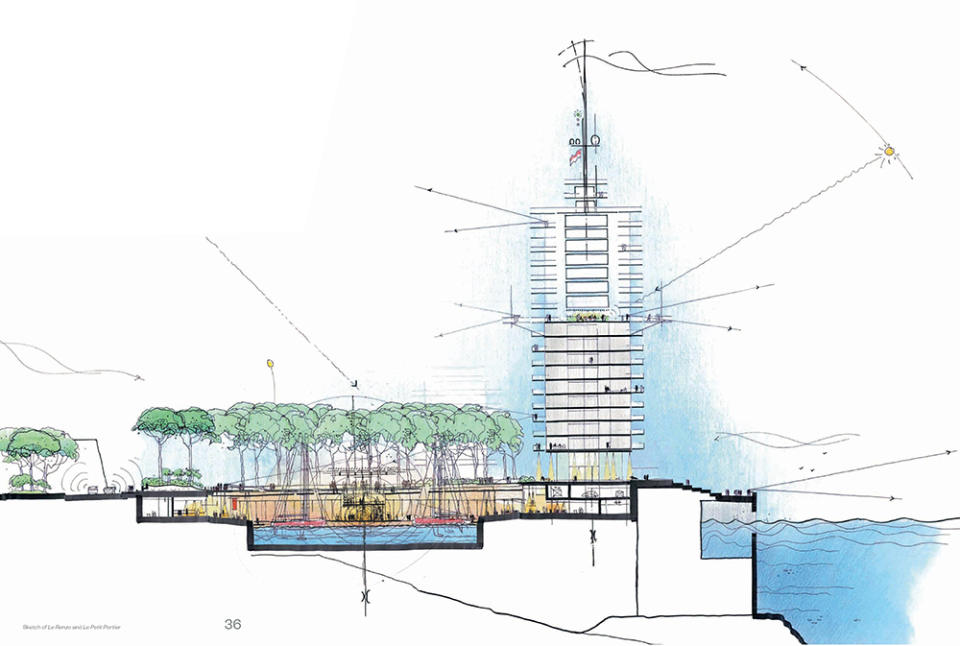
The developers refused to change fixtures or finishes, instead delivering the apartments as-designed for owners to adjust as they wish, a rarity in high-end real estate. There were no agents involved on Mareterra’s side, either; that role fell to the partners in the project, including Levy-Soussan and homegrown billionaire developer Patrice Pastor—and they didn’t delegate. “We have no salespeople,” Levy-Soussan says. “We sold it ourselves.” Another person familiar with the project puts it more pithily: “Patrice is the master and commander of that entire thing. No one goes in there without his personal say-so.” And for good reason: He’ll be one of the neighbors.
Around half the buyers of Mareterra’s 114 units were existing Monaco residents, Levy-Soussan says, and half were new to the principality. Many bought more than one property. Levy-Soussan says that the project sold out almost entirely off-plan but declines to specify prices. “Mareterra prices are in line with the current market prices in Monaco,” is all he’ll offer. “People think that what makes luxury is price. It’s not the same.” (While residential property in Monaco sells for an average of €50,000 per square meter, or about $5,500 per square foot, one local expert claims Mareterra fetched twice that figure, which puts that entry-level 4,000-square-foot pad at about $41 million.) Such discretion conceals the true value of these properties, which—if true—are expected to outperform any local rival’s.

Edward de Mallet Morgan runs Knight Frank’s South of France operation and also oversees sales in Monaco from a nondescript office overlooking Port Hercules. He has the rangy confidence of an upper-class Briton, chatting animatedly about the appeal of Monaco and rattling off impressive stats: Monaco consistently ranks as the most expensive residential market globally in his firm’s annual wealth report, he says, citing the current edition, from 2022, when $1 million would buy just 183 square feet of prime Monegasque property, followed by 226 square feet of comparable high-end Hong Kong real estate or 355 square feet of the same in New York City. Government data supports his enthusiasm: Residential-real-estate prices have increased 60 percent over the past decade.
Buyers in Monaco should typically expect approximately a 5 percent capital appreciation per annum, he continues, and most new developments in the principality generally provide a 20 to 30 percent premium for flippers selling after initially buying off-plan. “But Mareterra is going to be different—some of those prices will double in four or five years,” de Mallet Morgan says. “It is arguably the triple-A waterfront location in Monaco now. It’s already pushed through the €100,000-per-square-meter mark and will keep going, because it’s not like there are a lot of other big schemes coming up to compete with it.” The curation of residents there has been critical, he adds. “They’ve effectively said, ‘You know what? The wealthiest owners are scattered around the other districts in Monaco—let’s put them all in one.’ And that’s what it is: a top-tier community within the existing hierarchy of Monaco. And if you don’t come about it in the right way, present yourself the right way, or we don’t like who you are? Then forget it.”
Nothing is more sought-after, of course, than whatever has been deemed to be off-limits—especially to those unaccustomed to encountering such roadblocks. Put simply, Mareterra isn’t a development where disreputable oligarchs and oil magnates can keep cash away from prying governments’ eyes. The developers have cherry-picked residents to ensure a diverse assortment of nationalities, among other criteria.
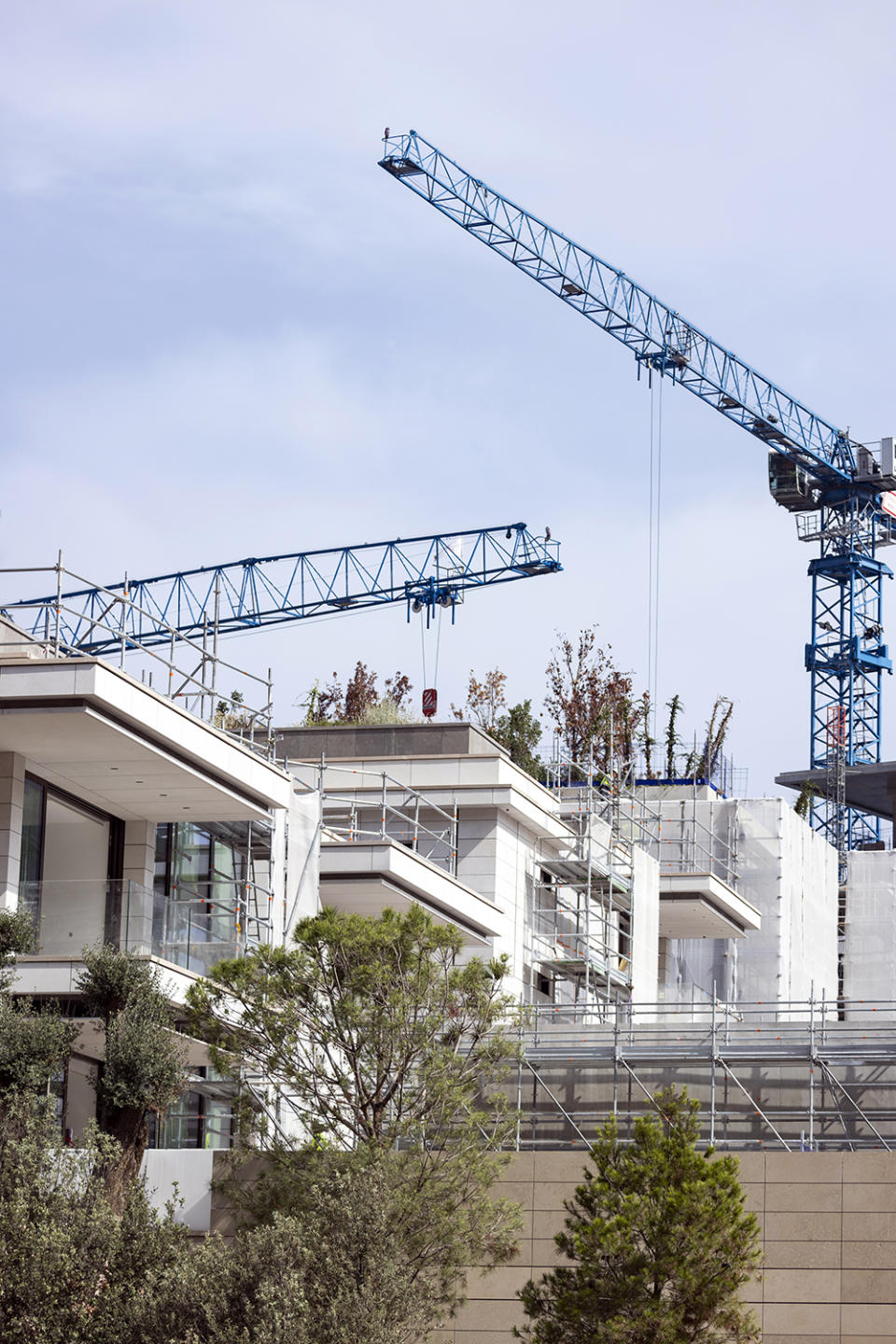
Levy-Soussan, in conversation, mentions several Britons and Americans. “You want the list of people who bought here?” he deadpans at one point. “Just teasing.”
That gatekeeping is crucial given that Mareterra is selling not only the appeal of the neighborhood but also the entire country as a refuge. “The slam-dunk development sites in Monaco have gone, and there’s safety in numbers,” says Caspar Harvard-Walls, a partner in London-based Black Brick, which specializes in top-tier real estate. What’s more, he suggests, Mareterra is effectively a branded residence, where the luxury label is Monaco itself; it’s intended to draw a new, younger kind of ultra-high-net-worth buyer. “They don’t want to live where their parents or grandparents do. They want to be with people their own age.” Adding to Mareterra’s allure: With current engineering know-how, it’s impossible to extend into the Mediterranean beyond its current confines, so views will be safeguarded. (There’s no legal “right to light” in Monaco, meaning occupants of the formerly waterfront apartments whose views Mareterra now blocks are simply out of luck.) There are patches of the coast as yet unextended, notably off Le Rocher, the rocky outcrop on which the palace perches, but the issue is cost. The seabed there is too deep to feasibly, and profitably, encroach on the waters—at least for now.
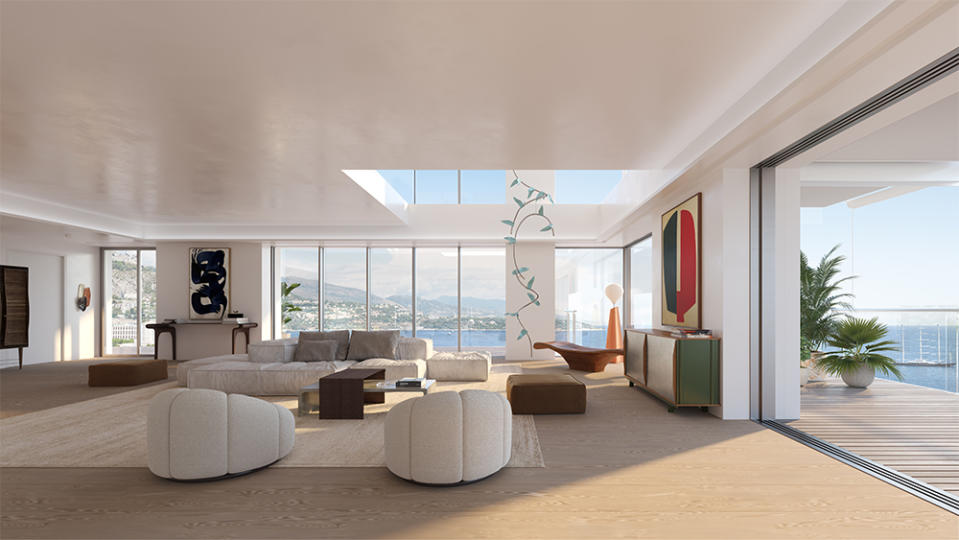
The appeal of living in Monaco has long lain in its tax-friendly policies. The principality’s absence of levies on capital gains, income, and property is why the writer Somerset Maugham memorably described it as the original “sunny place for shady people.” Today, de Mallet Morgan says, there’s an attraction beyond wealth preservation: safety. Increasingly, there’s a considerable risk involved in wearing a Daytona or a bejeweled Royal Oak, which is why many languish in private vaults. “A lot of my friends and clients here take off their jewelry and put it in a safe before they fly to London,” he says.
“These days there are very few places in the world where you can show off your wealth if you want to. It’s basically here and in the Middle East.”
The Persian Gulf, incidentally, is another land-poor, cash-rich enclave that has reached into the surrounding seas to extend its salable square footage. In Monaco, Mareterra isn’t the first project of this kind championed by Prince Albert, who has long touted his interest in marine ecology and spends time, and money, promoting ocean conservation. An earlier effort was intended to have a far larger footprint, at almost 30 acres, with Daniel Libeskind and Norman Foster announced as finalists, but was stymied by the financial crisis of 2008 and canceled before work began; according to sources familiar with the efforts, both the environmental impact and the cost were to blame. Conversely, the smaller footprint and particular shape—a wavy, uneven outline—of Mareterra were determined by the local currents. Following this contour was less disruptive to the ecosystem and wave patterns, more easily allowing the developers to protect indigenous marine life and minimize underwater impact to nearby coral reefs and Neptune grass.
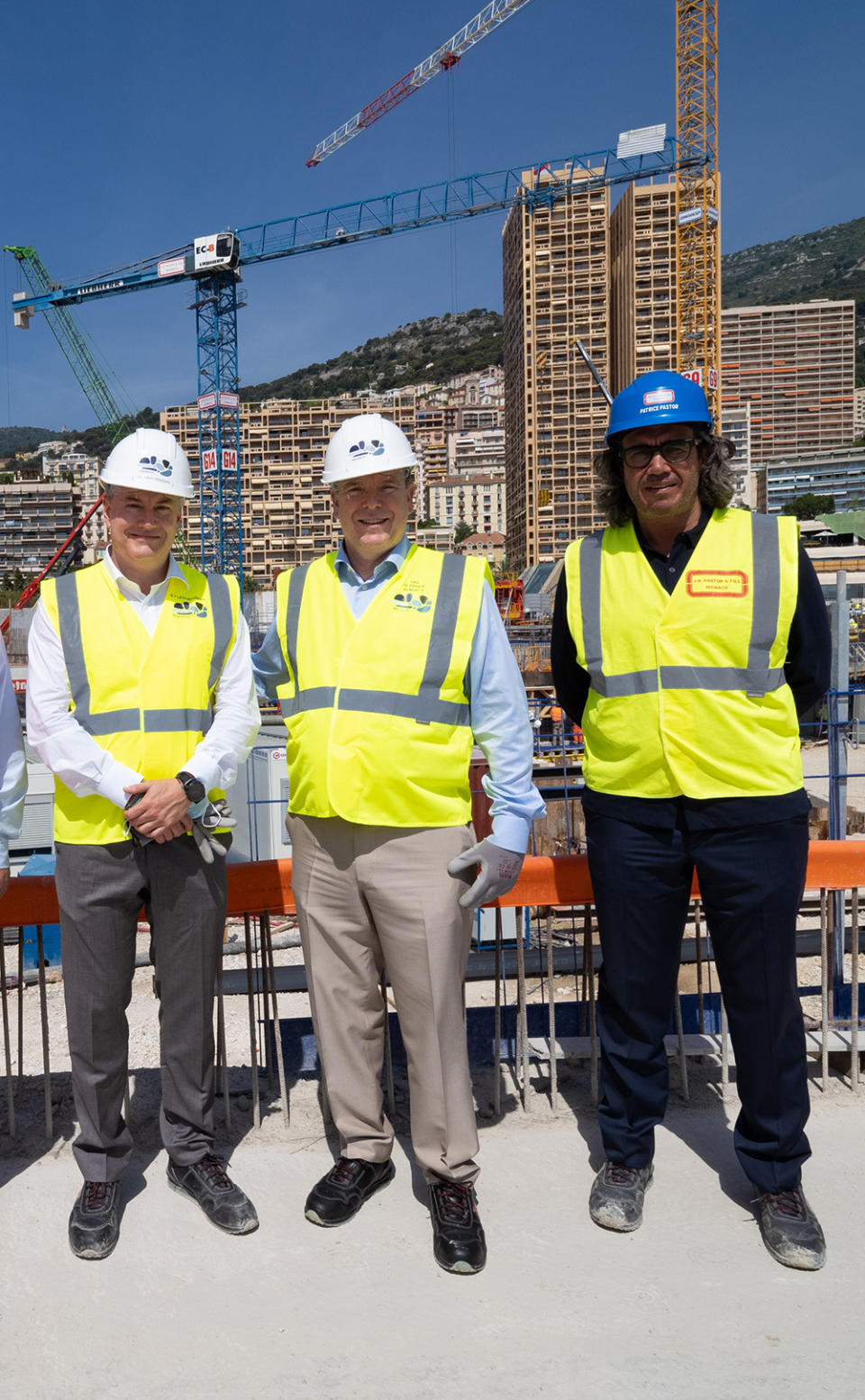
There’s a reason the ruler returned to try again, according to Mark Braude, who wrote the book Making Monte Carlo, about the state’s modern transformation. Braude believes that physically growing its landmass is a psychological need—not merely a practical one—for Monaco. In 1861, France annexed 80 percent of the principality’s historic dominion in exchange for 4 million francs and recognizing its existence. Since then, the country has made every effort to make up for the lost territory, acre by acre. “Every inch counts, and it has to be maximized for profit and for survival,” Braude says, likening Monaco to another self-made place of myth and money. “They’ll make it happen, like Las Vegas does. That’s part of the attraction: the opulence and bizarreness of putting things where they’re not supposed to be.” It was about six years before France’s geographic gastric bypass that the Grimaldis authorized the opening of the first casino in the country—a gesture to position it as a playground of the rich. “It seems like that bluff, that vision, the idea of presenting it as an elite place, has come to fruition now.”
Once Mareterra is completed, though, there will still be more splashy projects to come, including l’Esplanade des Pêcheurs on Quai Rainier, down on Port Hercules. There, the onetime site of the Monaco Yacht Club, almost two dozen new homes are planned, to be developed by Patrice Pastor’s prime rival, Claudio Marzocco. Such competitive retorts don’t concern Levy-Soussan, however. As a native Monegasque, he’s clearly devoted to the project for reasons that transcend the transactional. “I don’t think I could do the same in London, as I would not put my heart into it as much,” he says. “I’m doing the project, and I have this job, because I’m so attached to my country, my prince. I’m proud of it.”
Best of Robb Report
Sign up for Robb Report's Newsletter. For the latest news, follow us on Facebook, Twitter, and Instagram.

